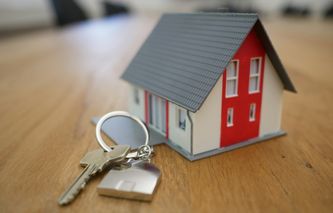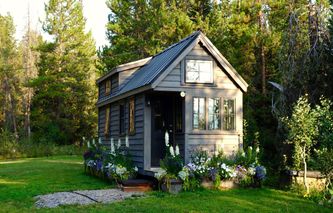When the number of unsold homes increases, that's a sure sign of a slow real estate market. Buyers might have a wide selection from which to choose, but what if they're trying to sell your home in a slow market? There's a lot of money at stake when selling a home, so it's important to understand just how much an unsold home can cost.
In this article, we're going to look at the economics and dynamics that occur when the real estate market slows to a crawl. As part of that discussion, we'll talk about the law of supply and demand, and how that can affect the selling price of a home. We'll also talk about the opportunity cost sellers lose when a home goes unsold for an extended period of time. Finally, we'll talk about some of the tactics sellers can take to ensure they're getting a fair price for their home.
Selling Homes
Additional Resources |
We're going to start this discussion by making a couple of simplifying assumptions. The first has to do with market efficiency, while the second deals with future prices:
Market Efficiency: the real estate market is not as efficient as the stock market. Some buyers may undervalue a home, while others may place too high a value on the home. But it's reasonable to assume there is enough information about the homes in a given area to make the market fairly efficient.
Future Prices: the random walk hypothesis states that future prices will not follow a pattern or trend, and that past performance cannot be used to predict future prices. So an uptick in home prices following a slump doesn't mean values are starting to rise; they could just as easily go lower.
Real Estate Markets
These two underlying assumptions are important to understand. Market efficiency is important because it means that if a home is not selling quickly, then it's very likely the asking price is too high. For example, let's say a seller believes a fair price for their home is $750,000, but it's not sold after seven months on the market. In this example, it's very likely the asking price for the home is too high.
If the seller were to lower the asking price to $1.00, then it's very likely they would be immediately flooded with offers to buy the home. Obviously, selling the home for $1.00 is unreasonable. In this example, we can safely make the assumption the home should be priced somewhere between $750,000 and $1.00.
Logically, we can conclude that when a home is priced correctly in a given market, there will be a sufficient number of buyers interested in the property (demand equals supply at a given price). If activity is too slow, then the home is priced too high. If activity is too robust, then the home is priced too low.
Future Real Estate Prices
As is the case with stock prices, market analysts (in this case real estate agents) will often try to convince their clients they know which direction the market is heading. Burton G. Malkiel, an economist, professor at Princeton University, and the author of A Random Walk Down Wall Street, dispelled the myth that individuals are able to predict the future based on historical trends.
Based on the findings of professor Malkiel, as well as those of other studies, we're going to assume that even in a slow market, no one can accurately predict when a housing market will finally turn around.
Slow Real Estate Markets
During the Great Recession of 2008 / 2009, home prices plummeted. According to the U.S. Department of Housing and Urban Development, the average selling price of a new home in 2007 was $313,600, while the average price of a new home sold in 2009 was $270,400. In 2006, the median number of months to sell a new home was 4.3; while in 2009, the median number of months to sell a new home was 13.9. There was no doubt in anyone's mind that 2009 was a slow real estate market, and the data proves it too.
Unfortunately, when prices decline, sellers often place too much emphasis on how much their home was worth before the market slowed down. Psychologically, sellers have a tough time coming to the realization their home is worth less, and they cling to the hope of finding a buyer; even if the home is priced out of the market.
Carrying Costs
Experts generally state that an unsold home has a carrying cost of around 1% of the home's value each month. That is to say, each month that a home goes unsold, it costs the owner around 1% of the home's value. That seems like a lot of money; let's put this theory to the test.
We can use information gathered by the Census Bureau's American Housing Survey. We'll use the 2017 survey results (published in 2018) in this example, but the same results should hold true regardless of the year. The results of that survey demonstrated that on average each home cost:
Real Estate Taxes: $200 per month or $2,400 per year
Mortgage Payments: $900 (principal and interest) per month or $10,800 per year
Property Insurance: $67 per month or $804 per year
Electricity: $106 per month or $1,272 per year
Natural Gas: $55 per month or $660 per year
Fuel Oil: $100 per month or $1,200 per year
Drinking Water: $50 per month or $600 per year
Trash / Garbage Disposal: $25 per month or $300 per year
Routine Maintenance: $42 per month or $504 per year
In this same survey, the typical home cost was $160,000. Adding the above numbers we can conclude that owning a home costs the average American $1,545 per month or $18,500 each year. That works out to about 11.6% of the home's value per year, or 0.96% each month. That's pretty close to 1%. Of course the above costs would grow or shrink with the size of the home, so this example should hold true regardless of the home's value. We'll revisit this information again shortly.
Fair Home Prices in Slow Markets
We're going to finish this topic with some tips to help ensure sellers get a fair price for their home, even in a slow real estate market. The first tip goes back to the seller's emotions. Forget about what the home was worth in the past and focus on what the market will pay for the home today.
It's also important to check out the competition. Set aside some time over a weekend or two and visit local open houses. Take notes, and compare the size of those homes, the features they offer, as well as their selling price. With this information, sellers should be able to determine a fair price for their home.
Next, figure out how long it's taking to sell a home in the local market. This is accomplished with two data points that any reputable real estate agent can provide: the total number of homes for sale in the area (however it's defined), and the number of homes sold in that exact same market over the last month. With these two data points, it's possible to determine the average time it's taking to sell a home in the area.
For example, let's assume a local market has 1,200 homes currently for sale, and last month 140 homes were sold. At that same pace, it would take 1,200 / 140, or 8.6 months to sell a home.
If a seller decides to price their home the same way everyone is currently pricing their homes, then it's probably going to take them around nine months to sell it. At a carrying cost of 1.0% per month, it's going to cost them nearly 9% of the home's value over that timeframe. If a seller wants to close on a deal faster, they'll need to price the home more aggressively.
Finally, sellers should take into consideration that certain times of the year are better to sell a home than others. Fewer homes will sell between Thanksgiving and the middle of January. This is because most families are focused on the holidays, and spending time with family and friends. The most desirable time to sell a home is in the spring, because it's less disruptive to move a family when schools are closed for summer vacation.
About the Author - Selling a Home in a Slow Market

.jpg)

